What's New
Displaying results 1971 - 1980 of 4052
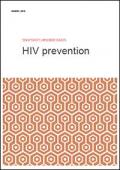
Resource | Reviews and Snapshots,
More than 2 million new HIV infections occurred in 2014—two thirds occurred in sub-Saharan Africa. The speed at which new HIV infections are declining needs to accelerate in order to meet the UNAIDS Fast-Track Targets by 2020.
The UNAIDS Fast-Track prevention target is to reduce the number of new HIV infections to fewer than 500 000 annually by 2020, a reduction of 75% over the next few years.
By scaling up both treatment and HIV prevention, and front-loading investments, around 17.6 million new HIV infections can be averted between 2015 and 2030.
By investing in averting new HIV infections, the future costs of treatment will be reduced and HIV prevention and treatment programmes can be sustained.
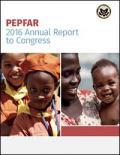
Resource | Publications,
The bold and visionary leadership by President George W. Bush and the United States (U.S.) Congress that created the U.S. President’s Emergency Plan for AIDS Relief (PEPFAR)—a legacy that President Barack Obama has embraced and on which he has significantly expanded—has fundamentally transformed the global HIV/AIDS response. Since 2003, with Congress’s extraordinary investment, PEPFAR has helped to halt the relentless escalation of new HIV infections and mortality rates across the globe. PEPFAR has saved millions of lives and prevented millions more HIV infections by providing core HIV prevention and treatment services, changing the very course of the HIV pandemic. Our investments have resulted in more than 1.5 million babies who would have otherwise been infected being born HIV-free, and have provided compassionate care and support for millions of AIDS orphans and vulnerable children (OVC).
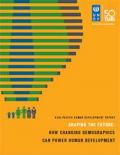
Resource | Publications,
People are the real wealth of nations. The opportunities they have and the choices they make determine the course of human development—nowhere more so than in Asia-Pacific, home to half the world’s population. Asia-Pacific’s future, to a large extent, shapes the world’s future.
This Asia-Pacific Human Development Report breaks new ground in the way in which it links demography with human development. It explores how periods of demographic transition come with significant opportunities, but also risks. Countries which overlook both these do so at their peril, missing out on potentially large gains in human well-being and economic prosperity. The report emphasizes that policy makers need to understand the implications of a demographic transition, and be able to incorporate appropriate responses to it across all aspects of national development planning.
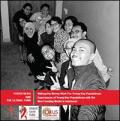
Resource | Publications,
The document aims to portray the meaningful engagement of young people, particularly young key populations (YKP), in the New Funding Model (NFM) process in Indonesia manifesting their greater ability of advocacy, dialogues and technical inputs. Fokus Muda, the national forum of young key populations in Indonesia highly capitalized the essence of NFM broadly supported by the national stakeholders. They played integral role in the development of national strategic plan on HIV, engaged in numerous country dialogues organized by the Country Coordinating Mechanism (CCM) and civil society, formed coalition with the civil society, held numerous bi-lateral meetings with the technical partners and CCM members and provided inputs in the draft concept note of the Global Fund.
The result was readily observed where the final concept note submitted by Indonesia to the Global Fund integrated the issues of some YKP, while inability to integrate remaining YKP became the global advocacy agenda to review and amend the modular template of the Global Fund concept note.

Resource | Publications,
Asia and the Pacific’s AIDS response is showing mixed results, with each country in the region facing a different situation. While progress is being made in countries such as Cambodia, India, Malaysia, Myanmar, Nepal, and Thailand, in others, such as Bangladesh, Indonesia, the Philippines, and Sri Lanka, the rate of new HIV infections is increasing. New HIV infections are concentrated among key populations at higher risk, which include people who inject drugs, female and male sex workers and their clients, men who have sex with men, and transgender people.
However, positive changes are taking place around the region, due to strong leadership and enhanced community education, advocacy, and access to treatment. In fact, leadership has not just come from the quarters of government or intergovernmental groups, but also civil society, including young people.
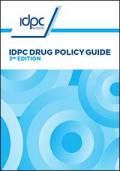
Resource | Publications,
This edition of the IDPC Drug Policy Guide is more comprehensive and forward looking than ever before, and embodies the breadth and diversity of the consortium, which has grown both geographically and in thematic diversity since IDPC’s inception ten years ago.
This Guide brings together global evidence, best practice and experiences to provide expert analysis across the spectrum of drug policy. This analysis has been made possible through the contributions from many IDPC members – including networks of key affected populations – and is the only document of its kind to provide such a broad and comprehensive investigation of what works and what doesn’t in drug control policies.
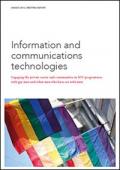
Resource | Publications,
HIV incidence among gay men and other men who have sex with men appears to be rising around the world; despite this, HIV programme coverage remains insufficient, declining from 59% in 2009 to 40% in 2013 (1). Where HIV programmes do exist for gay men and other men who have sex with men, they are often underresourced and insufficiently tailored to the specific needs of that population.
Information and communication technology (ICT) represents an important new resource for enhancing the reach and effectiveness of HIV programming. Gay men and other men who have sex with men already use ICT to facilitate many kinds of interactions, and a host of private for-profit platforms exist to help men negotiate offline social and sexual encounters.
ICT holds the potential to drive measurable programmatic improvements across the cascade of HIV prevention, care and treatment services: it can collect and disseminate information, link virtual content to physical services and complement offline components of HIV programmes.
UNAIDS collaborated closely with the Global Forum on Men Who have Sex with Men and HIV (MSMGF), the LINKAGES project and the Health Policy Project (both of which are supported by the United States Agency for International Development, or USAID) to organize an action-oriented consultation. That meeting, held over two days in May 2015, convened experts in the areas of ICT and HIV among gay men and other men who have sex with men.
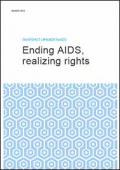
Resource | Reviews and Snapshots,
In the past 15 years, global progress against AIDS has been significant. Yet achievements have been unequal. Throughout the world, stigma, discrimination and exclusion, as well as imbalanced power and gender relations, continue to make women and girls, young people and key populations vulnerable to HIV and hinder access to HIV prevention, treatment and care services.
The AIDS response has demonstrated the importance and feasibility of overcoming human rights, gender-related and legal barriers to HIV services. The vision of zero discrimination put forward in the UNAIDS 2009–2015 Strategy and endorsed by the 2011 Political Declaration on HIV and AIDS has inspired action in advocacy, litigation and law reform for the right to health, including access to essential medicines.
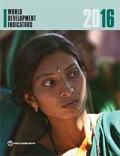
Resource | Publications,
World Development Indicators will report on progress toward the Sustainable Development Goals, as it did with the Millennium Development Goals. The Sustainable Development Goals cover a broader range of issues, and this edition expands coverage in the World view section. For each of the 17 goals, key indicators have been selected to identify important trends and challenges and elicit discussion on measurement issues.
Where possible, this edition of World Development Indicators includes new indicators to reflect the 169 targets of the Sustainable Development Goals, but the structure of the book remains the same as in previous editions: World view, People, Environment, Economy, States and markets, and Global links. Each section includes a brief introduction, a global map of a key indicator, a table, a section about the data, and an index of other indicators accessible online. World view retains the two tables showing progress toward the World Bank Group’s goals of eradicating poverty and promoting shared prosperity.
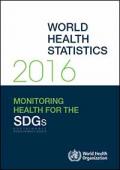
Resource | Publications,
The World Health Statistics series is WHO’s annual compilation of health statistics for its 194 Member States.
World Health Statistics 2016 focuses on the proposed health and health-related Sustainable Development Goals (SDGs) and associated targets. It represents an initial effort to bring together available data on SDG health and health-related indicators. In the current absence of official goal-level indicators, summary measures of health such as (healthy) life expectancy are used to provide a general assessment of the situation.





